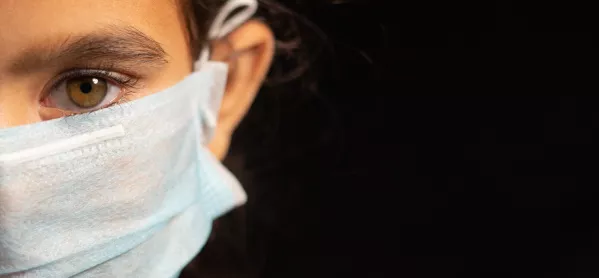From Monday, guidance issued by the Department for Education will make it mandatory for all adults and children aged 11 and above to wear a face covering when moving around the school premises. That means that if a student is outside of a classroom or activity room, and in a corridor or communal area, where social distancing cannot easily be maintained, they need to be wearing a mask - unless they have a medical reason not to wear that mask.
The benefits of wearing masks for both the wearer and the general population are well documented. But putting the new guidance into practice is likely to be a challenge for teachers and school leaders. Mask wearing will need to become a cultural norm to encourage full compliance.
What if a student refuses to wear a mask?
Students up and down the country are adapting extremely well to the new safety measures put in place to ensure that schools could open in September 2020. However, there are always exceptions and exemptions.
The question for teachers and school leaders is, what should we do with any student who wilfully refuses to comply with the guidance and will not wear a mask, despite not being exempt for other reasons?
Let’s take an example. A Year 11 student is walking down the corridor with a group of friends, on their way to a lesson, without wearing a mask. He is stopped by a member of staff and asked to put on a mask. The student is uncooperative, refuses to comply and continues down the corridor with their friends.
What can we do in this situation? As I see it, there are three options.
1. Restorative conversation
This might mean a member of staff sitting with the student and explaining to them the importance of wearing masks to protect themselves, their teachers, and their community.
The advantage of this approach is that it educates the child, and carries the possibility of changing their behaviour in the long term without being punitive. However, the downside is that it puts the member of staff conducting the conversation at increased risk unless this conversation can be facilitated in an outdoor environment or classroom from a two-metre distance.
2. After-school detention
Another alternative is to use the traditional sanction of a detention. The advantage is that the punishment will likely serve as a deterrent against repeating the same behaviour in future. The disadvantage is that, again, a member of staff will be exposed to a pupil refusing to wear a mask. Detentions also come with administrative baggage: contacting the parents, producing the paperwork and supervising the detention. And if the pupil slips through the net, their behaviour is unlikely to be checked and the cultural norm will not be reinforced.
3. Internal fixed-term exclusion
This would certainly emphasise the severity of the offence. By refusing to wear a mask, the student is putting the health of staff members and students at risk – there is certainly a case to be made that this deserves a severe punishment.
You can still have a restorative conversation within the internal fixed-term exclusion room, but parents will also be informed, and it sends a message to staff that leaders are taking the matter seriously.
The downside is that exclusion rooms are often rather small and poorly ventilated, and may become full quickly. You would also need to prevent bubble groups mixing within the exclusion room, which means that the sanction may not be immediate and may come many days later, when further breaches have already occurred.
Finally, there is the potential for pushback from parents who may feel the punishment does not fit the crime.
There are no easy solutions here. Prevention will be a big part of addressing the issue. It is important to create a culture where mask wearing becomes second nature. Schools need to promote mask wearing and communicate the benefits to all through form time, assemblies, posters and modelling.
It takes time and constant reinforcement to establish social norms, but until those norms are established, the use of sanctions will be necessary to support and promote the message in the meantime.
The writer is a deputy headteacher in the North of England.




